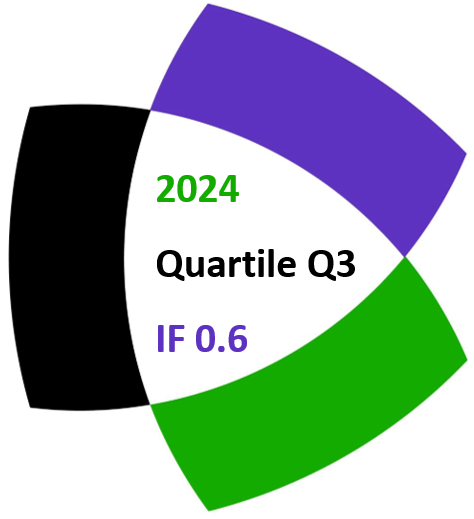Yong Zhang, Mei Jiang and Qiongzhi Tang
Notes on Number Theory and Discrete Mathematics
Print ISSN 1310–5132, Online ISSN 2367–8275
Volume 31, 2025, Number 4, Pages 736–746
DOI: 10.7546/nntdm.2025.31.4.736-746
Full paper (PDF, 201 Kb)
Details
Authors and affiliations
Yong Zhang ![]()
![]()
School of Mathematics and Statistics, Changsha University of Science and Technology
Hunan, Changsha, 410114, People’s Republic of China
Mei Jiang ![]()
School of Mathematics and Statistics, Changsha University of Science and Technology
Hunan, Changsha, 410114, People’s Republic of China
Qiongzhi Tang ![]()
School of Mathematics and Statistics, Changsha University of Science and Technology
Hunan, Changsha, 410114, People’s Republic of China
Abstract
Many authors investigated the problem about the linear combination of two polygonal numbers being a perfect square, i.e., the Diophantine equation
![]()
where ![]() denotes the
denotes the ![]() -th
-th ![]() -polygonal number and
-polygonal number and ![]() are positive integers. In this note, we continue the study of this problem in another direction and consider three Diophantine equations
are positive integers. In this note, we continue the study of this problem in another direction and consider three Diophantine equations
![]()
By the theory of Pell equations and congruences, we obtain some conditions such that the above three Diophantine equations have infinitely many positive integer solutions.
Keywords
- Polygonal number
- Diophantine equation
- Pell equation
- Positive integer solution
2020 Mathematics Subject Classification
- 11D09
- 11D72
References
- Bencze, M. (2005). Proposed problem 7508. Octogon Mathematical Magazine, 13(1B), 678.
- Chen, J. P. (2012). The squares with the form
 . Natural Science Journal of China West Normal University, 33(2), 196–198, 217.
. Natural Science Journal of China West Normal University, 33(2), 196–198, 217. - Deza, E., & Deza, M. M. (2012). Figurate Numbers. Word Scientific, Singapore.
- Dickson, L. E. (2005). History of the Theory of Numbers. Vol. II: Diophantine Analysis. Dover Publications, New York.
- Eggan, L. C., Eggan, P. C., & Selfridge, J. L. (1982). Polygonal products of polygonal numbers and the Pell equation. The Fibonacci Quarterly, 20(1), 24–28.
- Guan, X. G. (2011). The squares with the form
 . Natural Science Journal of Ningxia Teachers University, 32(3), 97–107.
. Natural Science Journal of Ningxia Teachers University, 32(3), 97–107. - Guy, R. K. (2004). Unsolved Problems in Number Theory. Springer-Verlag, New York.
- Hu, M. J. (2013). The positive integer solutions of the Diophantine equation
 . Journal of Zhejiang International Studies University, 4, 70–76.
. Journal of Zhejiang International Studies University, 4, 70–76. - Jiang, M., & Li, Y. C. (2020). The linear combination of two polygonal numbers is a perfect square. Notes on Number Theory and Discrete Mathematics, 26(2), 105–115.
- Ke, S., & Sun, Q. (2011). About Indeterminate Equation. Harbin Institute of Technology Press, Harbin.
- Le, M. H. (2007). The squares with the form
 . Natural Science Journal of Hainan University, 25(1), 13–14.
. Natural Science Journal of Hainan University, 25(1), 13–14. - Peng, J. Y. (2019). The linear combination of two triangular numbers is a perfect square. Notes on Number Theory and Discrete Mathematics, 25(3), 1–12.
- Ran, Y. X. (2008). The square number with the form
 . Journal of Tianshui Normal University, 28(5), 18–19.
. Journal of Tianshui Normal University, 28(5), 18–19. - Sun, Z. H. (2009). On the number of representations of
 by
by  . Journal of Number Theory, 129(5), 971–989.
. Journal of Number Theory, 129(5), 971–989. - Wu, H. M. (2011). The square numbers with the form
 . Journal of Zhanjiang Normal College, 32(3), 20–22.
. Journal of Zhanjiang Normal College, 32(3), 20–22.
Manuscript history
- Received: 24 April 2025
- Revised: 6 October 2025
- Accepted: 26 October 2025
- Online First: 28 October 2025
Copyright information
![]() Ⓒ 2025 by the Authors.
Ⓒ 2025 by the Authors.
This is an Open Access paper distributed under the terms and conditions of the Creative Commons Attribution 4.0 International License (CC BY 4.0).
Related papers
- Jiang, M., & Li, Y. C. (2020). The linear combination of two polygonal numbers is a perfect square. Notes on Number Theory and Discrete Mathematics, 26(2), 105–115.
- Peng, J. Y. (2019). The linear combination of two triangular numbers is a perfect square. Notes on Number Theory and Discrete Mathematics, 25(3), 1–12.
Cite this paper
Zhang, Y., Jiang, M., & Tang, Q. (2025). Three Diophantine equations concerning the polygonal numbers. Notes on Number Theory and Discrete Mathematics, 31(4), 736-746, DOI: 10.7546/nntdm.2025.31.4.736-746.


